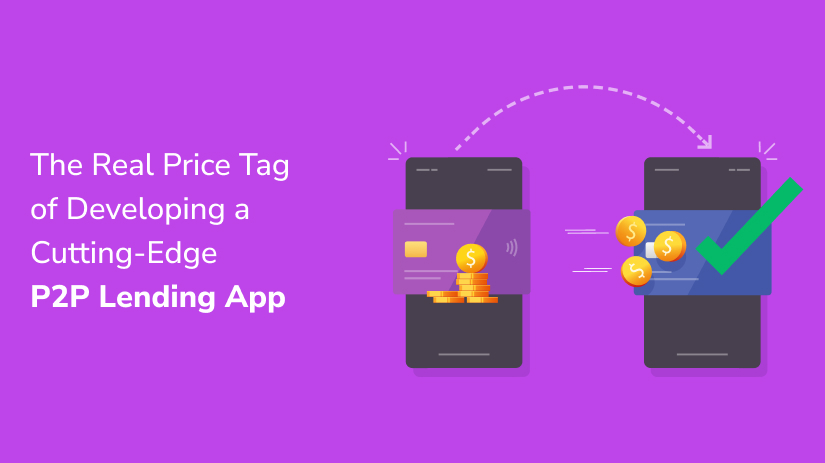In today’s fast-paced digital economy, the demand for innovative financial solutions has never been higher. One such solution that has gained significant traction is the P2P Lending App.
This technology-driven platform allows individuals to lend and borrow money directly from each other, bypassing traditional financial institutions.
But what does it truly cost to develop a cutting-edge P2P Lending App?
Let’s delve into the various factors that influence the overall price tag of such a venture.
Understanding the Basics
Before we break down the costs, it’s essential to understand what a P2P Lending App entails. At its core, a P2P Lending App connects borrowers with lenders, providing a marketplace where loans can be arranged without the need for a traditional bank.
The app typically includes features like borrower and lender profiles, loan matching algorithms, credit scoring, payment gateways, and customer support functionalities.
Key Cost Factors in Developing a P2P Lending App
Platform and Technology Stack
The choice of platform (iOS, Android, Web) and the technology stack (programming languages, frameworks, databases) significantly impact the development cost. Developing for multiple platforms increases the complexity and cost but also broadens the potential user base.
Frameworks such as Ruby on Rails, Laravel, etc. are open-source frameworks. So, ultimately it will help a lot in cost-cutting.
Connect with us for Fintech Development Needs
Trusted by companies like Plaid, Yodlee, Codat.
Core Features and Functionalities
The more sophisticated and feature-rich your P2P Lending App, the higher the development cost. Essential features include:
User Authentication and Verification
Secure login and verification processes to ensure user authenticity.
Loan Application and Approval System
A streamlined process for users to apply for loans and get approvals.
Credit Scoring and Risk Assessment
Integrating algorithms and third-party services for assessing borrower risk.
Payment Gateway Integration
Secure and reliable payment processing for loan disbursements and repayments.
Customer Support
In-app support features such as chatbots or live support to assist users.
Connect with us for Fintech Development Needs
Trusted by companies like Plaid, Yodlee, Codat.
UI/UX Design
A user-friendly interface and seamless user experience are crucial for the success of any app. Investing in high-quality UI/UX design ensures that users can easily navigate the app and perform desired actions without frustration.
This often requires hiring experienced designers who understand the nuances of financial software development.
Regulatory Compliance
Financial applications must comply with various regulations and security standards to protect user data and ensure legal compliance. This involves additional costs for implementing security measures, regular audits, and legal consultations.
Development Team
The expertise and size of your development team will also influence the cost. Typically, a well-rounded team includes project managers, developers, designers, QA testers, and security experts.
Partnering with a specialized lending software development company or deciding to hire fintech developers can provide the necessary expertise but will add to the overall expense.
Maintenance and Updates
Post-launch, ongoing maintenance, and updates are required to fix bugs, improve features, and ensure compatibility with new operating system versions. This is an often-overlooked cost but is essential for the longevity and success of the app.
Estimating the Total Cost
The total cost of developing a P2P Lending App can vary widely depending on the complexity and scale of the project.
On average, a basic app might cost anywhere from $50,000 to $100,000, while a more advanced app with extensive features and high security could exceed $500,000.
Partnering with the Right Team
Choosing the right lending software development company is critical. Such companies bring a wealth of experience in building robust financial applications, ensuring that your app is not only functional but also secure and compliant with industry standards.
Alternatively, you might opt to hire fintech developers to build a dedicated in-house team that can offer more control and customization.
Conclusion
Developing a cutting-edge P2P Lending App is a substantial investment, but with the right approach, it can also be highly rewarding.
By understanding the various cost factors and partnering with experienced professionals in financial software development, you can create a platform that meets market demands and stands out in the competitive fintech landscape.
If you’re ready to embark on this journey, consider consulting with experts to get a detailed cost estimate and project roadmap tailored to your specific needs.
The real price tag of a P2P Lending App goes beyond mere dollars; it encompasses the value of innovation, security, and user satisfaction.
Happy P2P Lending App Development!!
Connect with us for Fintech Development Needs
Trusted by companies like Plaid, Yodlee, Codat.





